Location Gallery
Patratu valley




Patratu is located at 23.67°N 85.28°E. It has an average elevation of 405 metres (1328 feet) Patratu Dam was constructed under the planning of the greatest Indian engineer and father of Indian engineering, Sir Mokshagundam Visvesvaraya. This dam is only 40 km away from Ranchi, the capital of Jharkhand, from where it can be reached by road in less than an hour. It is directly connected to Ranchi, Patna, Jaipur, Jamshedpur, Varanasi, Jammu, Jabalpur, Allahabad, Delhi and Kolkata by train.
Best Time to visit 2PM To 8PM
Patratu Railway Station is the only railway station. It has three platforms with direct trains available for Kolkata in Up direction, and in the down direction New Delhi, Patna and many states of India like Punjab and Haryana.
Patratu is connected by State Highway 2 of Jharkhand, to its district Ramgarh and Ranchi. There is also a bus station where buses are available for many cities of Jharkhand and West Bengal.
Chuttupalu valley


Chuttupalu valley
Hargaddi Chokahatu ( The Land of Megaliths)


A megalith is a large stone that has been used to construct a structure or monument, either alone or together with other stones. The word megalithic describes structures made of such large stones without the use of mortar or concrete, representing periods of prehistory characterised by such constructions. For later periods, the word monolith, with an overlapping meaning, is more likely to be used.
Megalith also denotes one or more rocks hewn in definite shapes for special purposes.It has been used to describe buildings built by people from many parts of the world living in many different periods. The term was first used in reference to Stonehenge by Algernon Herbert in 1849.A variety of large stones are seen as megaliths, with the most widely known megaliths not being tombs.The construction of these structures took place mainly in the Neolithic period (though earlier Mesolithic examples are known) and continued into the Chalcolithic period and the Bronze Age.
Crocodile Park


The Crocodile Park, situated at 35 Kms from Ranchi on Ormanjhi-Sikidiri Road at Muta, was commissioned in the year 1987 under the IUCN programme of conservation of endangered species. Marsh crocodile was first spotted in late 1960s in Bhera River which flows nearby. Here the Crocodile breeding was started with 5 crocodiles, two from Bhera River and three from Madras Crocodile Bank
Tropic of cancer


Tropic of Cancer is passes through the India, including 8 Indian states. Tropic of Cancer passes through 8 Indian states including: Gujarat, Rajasthan, adya Pradesh, Chhattisgarh, Jharkhand, West Bengal, Tripura and Mizoram.
Betla National Park


One of India’s earliest tiger reserves (1974), Betla features luxuriant tropical forest cover and a rich variety of fauna.
The Betla National Park, was first established as a sanctuary and later upgraded to it’s present status. Average elevation is about 1000 feet and though the park is open throughout the year the best time to visit is between November to March. Spread over 250 sq. kms., the park is covered with good roads cris-crossing each other, to enables the motorist to have a closer view of the wild life in dense forests.
Gour, Chital, Elephant, Tiger, Panther, Sloth and Wild Bear, Sambhar, Nilgai, Kakar, Mouse Deer are permanent residents. Langurs are present in large families.
Betla features waterfalls and natural hot springs on one hand, and historical monuments including a 16th century fort of Chero kings on the other.
Khandoli


If you want to add a dash of adventure to the memories of your visit in Jharkhand, Khandoli about 10 kms from Giridih, may be just the right place for you. Rarely one finds right combination of a nearly 3 kms long dam, a hill, a large flat land and an amusement park all at one place. It is a must visit in October when Adventure fests are organized. The Khandoli dam is perfect for kayaking and water surfing. The hill on the other hand is ideal for climbing and trekking. There are also power gliding and parasailing facilities for those, who want to adventure in the open sky. There is also a paragliding centre there, providing basic lessions in adventure sports. Truly, it is sport for adventure tourism.
In winters it also becomes habitat for migratory birds like Siberian crane, attracting bird watchers in large numbers.
Udhwa Lake Bird Sanctuaries


About 40 kms away from Sahebganj town, Udhwa Bird Sanctuary includes two natural lakes, Patoura and Bareil.
A large number of birds of different species inhabit here. During winter migratory birds of exotic varieties visit this sanctuary making it attractive to tourists.
Trikuti


Almost 18 kms west of Deoghar, is famous for its hill temples. Legend says that many a sage attained salvation on the top of three hills situated here, popularly known as Trikuti.
The hill consists of huge boulders. On the right is a small temple where Parvati is worshiped. Close to her lies a Shivalinga. People flock here from far and wide during Shivaratri. The Trikuti is famous for Ropeway.
Suraj Kund (Hot Spring Water)


It is hot spring (one of the hottest in the region) about 72 kms away from Hazaribagh on the NH2. Surajkund hot spring is claimed to be the hottest spring in India. SurajKund hot spring has a surface temperature of 87 °C (189 °F) and an average subsurface temperature of 165 °C (329 °F).
According to recent assessment, India has a large potential of geothermal energy, which can be gainfully utilized for power generation, Jharkhand possesses a good share of these. Of the total recorded sites numbering 340 in India (assessed by Geothermal Education office - US), around 60 sites are in Jharkhand. SurajKund is among the most prospective sites. Bus services are available.
Topchanchi Lake
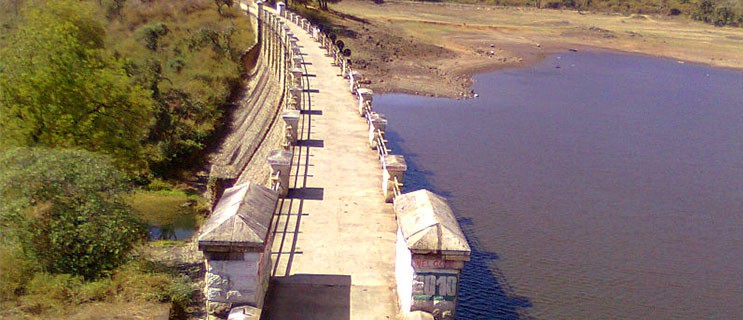

Located about 37 kms from Dhanbad, Topchanchi Lake is bliss in solitude, and an avian paradise. Surrounded by green hillocks and plalash forests, this man-made lake was built in 1924, during the days of British Raj.
To this day, it provides water to the major parts of the coal-city. The water body is now maintained by Coal Mining Area Development Authority. The nearest railway station at Gomoh, is just 6 kms away. It is the same historic site from where Netaji Subhash Chandra Bose boarded a train on Jan. 18, 1941, for his departure from India, disguised as a Pathan LIC agent. The railway station has been christened in his name and two bust sized statues of the leader have been installed both in the railway station and in the Topchanchi market.
In order to reach the lake, you may get down at Gomoh railway station and take a trekker or hire auto to Topchanchi.
Kiriburu


Saranda is Asia’s largest Sal Forest and Jharkhand’s Pride. An un-spoilt world, where nature rules supreme, it is the home of the endangered flying lizard, In the local Ho language it means “The land of seven hundred hills” and is located in the West Singhbhum District.
Saranda
is full of exciting and colourful flora and fauna. It is khown and
famous for its majestic Sal trees. Besides Sal, which is the principal
and dominating tree species a large number of trees, herbs and shrub
décor this beautiful forest. Right from the mammals to birds and
reptiles, Saranda is a golden treasure of wild life. However, its
majestic elephants are known all over the world, the magical sunrise and
sun set of Kiriburu in the hills of Saranda is a spectacular sight
Rock Garden


Overlooking the Kanke dam, about 8kms from the Railway Station, on the Kanke Road is the Rock Garden. While attracting tourists, the place also promises to be a favourite haunt for the lovers, raring to steal a clandestine rendezvous away from the glares of the city. The artificial gardens and waterfalls have been developed amidst the naturally occurring large boulders, by the reputed artistes from Kolkata. The horror house with eerie sound effects can send creeps down your spine. The imaginary figures sculpted in locally available stones are an artist’s delight.
Being in the midst of the city it can be easily approached through hired taxis, auto rickshaws and other local plying public transport.
Ranchi Lake


The placid lake lies in the heart of the capital city at a distance of 4.5 kilometres from the Ranchi railway station and 7 kilometers from the airport. It is near the Main Road of Ranchi, in the vicinity of the Marwari College for men.
It was excavated by Colonel Onsely, a British agent, in the year 1842. Enhancing its reticent charm is the majestic presence of the Ranchi Hill at its backdrop. The nearly one and half century old lake is located at the base of the hill. While withstanding the ravages of the changing city, it has however managed to retain its original charm. It is ideal for spending a couple of hours in solitude, while being in the midst of the city humdrums.
The site can be reached through auto and other public transport from the railway station.
Tagore Hill


True to its name, the idyllic hill, rising to a height of 300 feet, continues to preserve the legacy of the Nobel Laureate, Rabindranath Tagore. It lies within the city of Ranchi at Morhabadi , at a distance of 7 kms from the railway station and 10 kms from the airport. The elder brother of the Kabiguru, Jyotindranath Tagore, has visited the place in 1908. So enamoured was he by the captivating beauty of the Morhabadi Hill and its surrounding, that he set up his camp home on the hillock. Watching sunrise and sunset is one of the attractions for tourists. This is being converted into an art museum, which can be reached through a flight of easy steps.
Being in the midst of the city, the spot is easily accessible through light vehicles and three-wheelers.
Dimna Lake
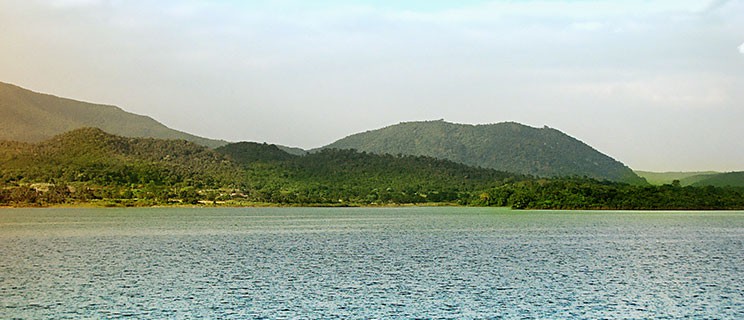

Located at distance of about 13Kms from the Jamshedpur city limits, at the foot of the Dalma Hills, its salubrious surroundings are ideal for picnics and boating.
This lake is the source of the drinking water of the entire city. It is an artificial reservoir surrounded by a mix and match of sparse and dense forest. There is a strong railing between the onlookers and the lake itself. It is a beautiful view from there. It has cemented flatbeds for people to play some sports or have a nice chit chat, while basking in the sun on the dam. There are cemented benches for people to spend a couple of refreshing moments.
Hazaribag National Park


For the ecologically oriented, Hazaribagh National Park, 115 KM from Ranchi, is the most famous wildlife park in the region. Nestling in low hilly terrain, at an average altitude of 615 m the park has an abundance of wild animals like the wild boar, sambar, nilgai, chital, sloth bear, tiger and panther. The main gate of the national park at Pokharia is 21 kms form Barhi and 16 kms from Hazaribagh. The NH-33 traverses a 111-kms stretch through the wildlife park that takes tourists to the remotest corners and the watchtowers are strategically placed around water holes and artificial salt licks to offer tiger sightings.
Indeed, the name Hazaribagh itself is sometimes considered to imply that it was once home to a thousand tigers.
Dalma Wildlife Sanctuary


The Dalma Wildlife Sanctuary located on the ranges of Dalma Hills, is around 13 kms from Jamshedpur and covering area of 195 square kilometers. Wild animals including elephant, barking deer, sloth beer and Sahil can be easily sighted in their natural habitat.
Both Tata Steel and the Forest Department run guesthouses at the top of the hill. There is also a temple of Shiva atop the hill, where devotees offer prayers during Shivaratri.
Saranda Forest


Saranda, the largest Sal forest in Asia, is located 122 kms from Jamshedpur. Famed for its multifarious flora and fauna, it has also been in the limelight due to its rich mineral reserve. Saranda, meaning ‘the land of seven hundred hills’ is spread over around 900 sq. kms and has mesmerised and fascinated nature-enthusiasts for decades. The spectacular sunset, here against the backdrop of tall dark silhouettes of Sal, would simply make you gaze wide eyed as the sky dons the hues of crimson, orange and grey, before the flaming ball of fire calls it off for the day.
Situated on the southern border of the state, the forest is home to endangered species of flying lizards and hundreds of elephants and is also an integral part of the migratory elephant corridor.
Sal, Mahua and Kusum are the major trees found in the forest, which is also home to the Ho tribe, and used to be a private hunting ground for the erstwhile royal family of Seraikela.
The main access point for getting into Saranda forest by road is Chaibasa, 60 kms southwest of Jamshedpur. Saranda can also be reached via the towns of Chakradharpur (89 kms from Jamshedpur) and Manoharpur (170 kms from Jamshedpur), on the main Bombay-Howrah rail line.
Jubilee Park


Jublee Park is situated in Jamshedpur. Jamshedpur is the district head quarter of East Singhbhum district. It is about 136 KM from Ranchi district. Jamshedpur is well connected with road and train route. A big tourist attraction within the city limits that is easily reachable from any corner of the city and across the India. The lush green Jubilee Park, spread over 225 acres, adorned with flower beds, gardens and illuminated fountains was presented by the Tata Steel Company to the citizens of Jamshedpur in its Golden Jubilee Year.
Built
on the concept of the Brindavan Gardens of Bangalore, its layout has
been conceptualized by Mr. G H Krumbiegel and Mr. B.S. Nirody who have
to their credit the famous parks of Mysore State and the Moghul Gardens
of Rashtrapati Bhawan, New Delhi.
Magnolia Sunset Point, Netarhat


Adding to the ambience of the place is the poignant love story of Mangolia, a young British girl who fell desperately in love with a tribal shepherd boy. A granite plaque narrates how Magnolia's love for the poor shepherd drew the ridicule of the girl's English community. Realising that her love would remain unfulfilled she chose to end her life by diving into the alley along with her horse. Magnolia Point is located around 10 KM from the town's main bus stand.
Ideal for picnics, fishing and bird watching is the Netarhat Dam, located 2 KM from the bus stand. The dam has been providing water supply to the region since the time of the British Raj.
Sunrise Point, Netarhat
This is the place where your heart dons wings….as a bird set free from the urban dungeons, it soars over hills and vales, tapping the rhythm of the wild hilly rivulets. It leaps way ahead of your head transporting you along on its flights of fancy. Needless to say, the Netarhat Plateau on the upper was, “Near to the Heart” of the erstwhile British soldiers too, that reminded them of their Scottish moors back home. Dense forests, serpentine roads, cool bracing breeze, nights may have probably prevailed upon the English to christen the place as Nature’s heart or Netarhat. However, some argue that the place has been named after ‘NeturHaat which means a marketplace for bamboo in the local language. Located at about 3622 feet high in Latehar District about 156 kms West of Ranchi, it was once the sumer retreat of the British Governor. Satpura range from Central India, meets the Chotanagpur plateau on the eastern side, at Netarhat is also the home of various primitive tribes, who had been residing in its hills for generations, in close harmony with nature
Sunrise Point
While in Netarhat, if you want to enjoy the most spectacular view of the rising sun, it has to be the sunrise point in front of the tourist bungalow, Hotel PrabhatVihar.
It located at a distance of half kilometer to one km from the Netarhat bus stand. As you wait in anticipation for that memorable rendezvous with the sun, you suddenly observe the hills and trees appearing as dark silhouettes against the clearing horizon. And lo and behold! The nature around you is gradually steeped in a reddish hue… then as you watch spellbound the passing shades of vibrant scarlet and orange…. From behind the hills in front the crimson ball suddenly appears in its full flamboyance and glory to greet you. Even the moonrise seen on full moon nights from here is a long cherished experience.
On reaching Netarhat, take the road from the bus stand leading to the tourist bungalow – Hotel Prabhat Vihar.
Nakshtra Van


Nakshatra Van is a park created by the Jharkhand Forest Department in front of the Jharkhand Raj Bhawan (Governor's Residence) in Ranchi, the capital of Jharkhand, a state of India. A nakshatra or lunar mansion is one of the 27 or 28 divisions of the sky, identified by the prominent star(s) in them, that the Moon passes through during its monthly cycle, as used in Hindu astronomy and astrology. Each Nakshatra is associated with a Zodiac, which is related to celestial bodies and their movements in sky. Hindu Astrologers believe that each constellation of the zodiac is associated with a tree. Those trees are of medicinal, social, aesthetic or economic value.
Nakshatra Van, Ranchi boasts to be a park unique in its own ways. The park can be said to be divided in various sections. The park is centered around a circle, which is a representation of the various Nakshatras on the ground. The circle is divided in arcs precisely according to the angles, these zodiacs subtend on earth. Tree of a particular zodiac has been planted in its corresponding arc. At the center of this circle, there is a musical fountain which has a huge pot in which the water gets collected. The park has beautiful flowers planted all along the pathway, and has sprawling lawns as well. There is a section for Medicinal Plants in the park which has some of the rare medicinal plants. At the center of this section, a sleeping statue of Dhanvantari is placed. There are swings and other amusement toys for kids in the Children section. The architecture and greenery of the park is quite picturesque. There are various sculptures in the park, which has adequate sitting benches for its visitors. The entrance and security of the park is taken care of by the Jharkhand State Forest Development Corporation (JSFDC). The best time for visiting the park is in early evening, preferably around 6:30 PM, when the park has a splendid look under the lights.
Nakshatra Van was established in Ranchi on 2May 2003 in an area of 7.5 Acre (approx). It was handed over to J.S.F.D.C. by the Forest Department on 26 June 2004.
Creation of the Nakshatra Van was unique in many ways. It was not just about planting trees, which is the core business of the Forest Department. It was about linking trees to popular belief. It required a great amount of studies about celestial activities, planetary and solar movements and mythological believes, and a very considerate implementation.
Main Attractions
Central Musical Fountain
Zodiac Trees planted in a circle
Flower Garden
Children Park
Artificial Water Fall and Bridge
Sleeping statue of Dhanvantri
Medicinal Plants Garden
Boating in Nakshatra Van water tank
Large Parking space
Coteteria.
Birsa Deer Park, Kalamati


Located about 23 kms from the capital city, across the Ranchi-Khunti Road, lies the BirsaMrigVihar at kalamati. Spread over an area of 23 hectares amidst the trees of Sal, Peepal, banyan etc, it is a rare feast for the eyes to sight the spotted Sambhar and Cheetal.
The park has three watch towers from where the tourists may get wide view of the site without distrurbing the natural activities of the animals. The entrance has been developed into a park for the children.
Nandan Pahar
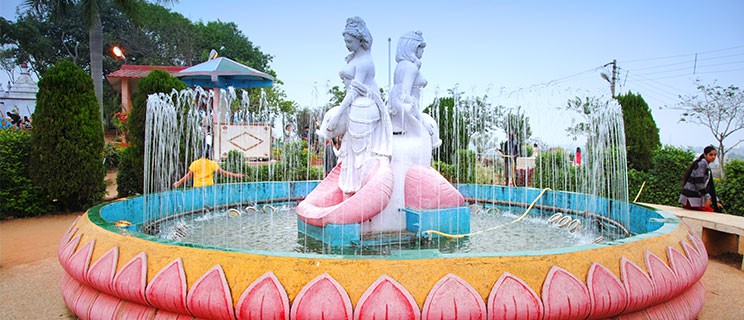

NandanPahar, 4.3 kms from BaidyanathDham, gets its name from the massive stone statue of Nandi atop the hill.
In addition to the Nandi temple, there are several other temples here
Biodiversity Park, Ranchi


Biodiversity Park is situated 18Km away from Ranchi in Lalkhatanga. One who is lover of natural beauty must plan to visit the Biodiversity Park. The natural place offering lot of attraction to tourist. Aim of development of park is to conserve rare and impressive plants for the coming generation. Attraction inside Biodiversity Park
Cactus House
Water Plant
Rose Garden
Medical Garden
Palm Garden
Aquatic Garden
Thinks to Know
Open- Tuesday to Sunday 10:00AM to 05:00PM
Close- Every Monday
Koel View Point


Once in Netarhat, it is hard to resist the charm of the River Koel. It is about 2 KMS form the bus-stand in between the jungles of Chirpines reaches you to the Koel View Point. The river flows about 10 kms below the site. Origination from a local hilly village Tutua Paani, the sun osculate waters share the spectacle of dawn and twilight, reflecting the myriad hues of the rising and setting sun. from deep crimson to fiery orange, or just the lilac and azure of a cloudless sky , the clear waters of the river mirror the passing moods of a nature at its scintillating best. Do not forget to watch the river during moonlit nights as well, when the water seems to get transformed into a silvery stream. Located on the banks of the river are clusters of small villages as Saarna Toli, Chaatan Jori resided by the primitive tribes that compel you to scribble some brisk notes or go for random shots with your camera, capturing their interesting ways of life.
Kamaldah Talab


Kamaldah pond is located 6 kilometers from betla National park and 2 km from Palamu Forts in Latehar district in the Indian state of Jharkhand. it is famous for the beautiful lotus flowers that bloom in it.
Tattapani Hot Water Spring


Tattapani Hot Water Spring: Meaning hot water spring is located in Jagram village, 11 Km away from Latehar district of jharkhand . The hot waters came out from different places on the river bed at Tattapani. It is a beautiful place where the Locals and tourist enjoy this hot water bath which is reach in Sulphur and believed to have high medical value and good for skin.
Sidhu & Kanhu Park, Ranchi


Siddho Kano Park is situated in the city. It has been established to commemorate the great freedom fighter, Siddho and Kano. This park is spread over an area of 9.41 hectare and consists of beautiful flower, garden, fountains, waking trails, and water body with variety of water plant.
Birsa Biological Park


Birsa Biological Park
Sido-Kanhu Park
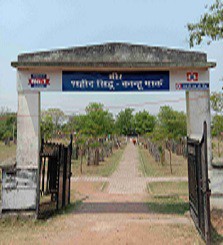

Sido-Kanhu Park
The forest guest house


The forest guest house
The Naspati garden


The Naspati garden
Sidhu Kabhi shaurya smarak Park, Lukhikundi


Sidhu Kabhi shaurya smarak Park, Lukhikundi
Hizla Pahar
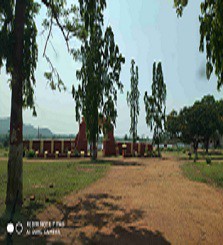

Hizla Pahar
Srishti pahar


Srishti pahar
Khutabandh


Khutabandh
Patratu Dam boating


Patratu Dam boating


